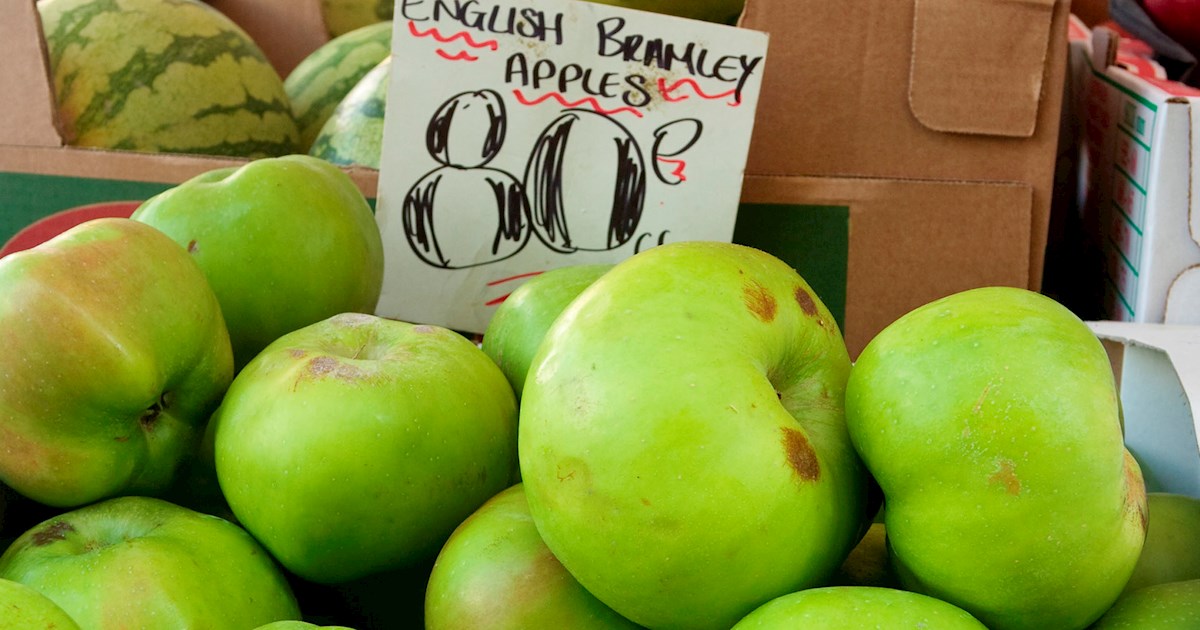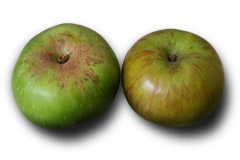Armagh Bramley Apples
Malus domestica is an English cultivar of apple that is usually eaten cooked due to its sourness. The variety comes from a pip planted by Mary Ann Brailsford. The Concise Household Encyclopedia states, "Some people eat this apple raw in order to cleanse the palate, but Bramley's seedling is essentially the fruit for tart, pie, or dumpling." Once cooked, however, it has a lighter flavour. A peculiarity of the variety is that when cooked it becomes golden and fluffy. Bramley's Seedling apple trees are large, vigorous, spreading and long-lived. They tolerate some shade. The apples are very large, two or three times the weight of a typical dessert apple. They are flat with a vivid green skin that becomes red on the side that receives direct sunlight. The tree is resistant to apple scab and mildew and does best when grown as a standard in somewhat heavy clay soil. It is a heavy and regular bearer; the apple, nicknamed the "King of Covent Garden", is the only British cooking apple produced all year round. As a triploid, the tree has sterile pollen. It needs a pollinator but cannot pollinate in return, so it is normally grown with two other varieties of apple for pollination. It has won many awards and currently holds the Royal Horticultural Society's Award of Garden Merit (H4).
Source: Wikipedia
Recipes


